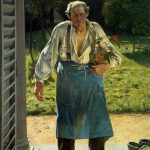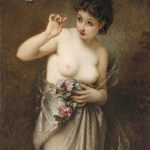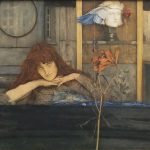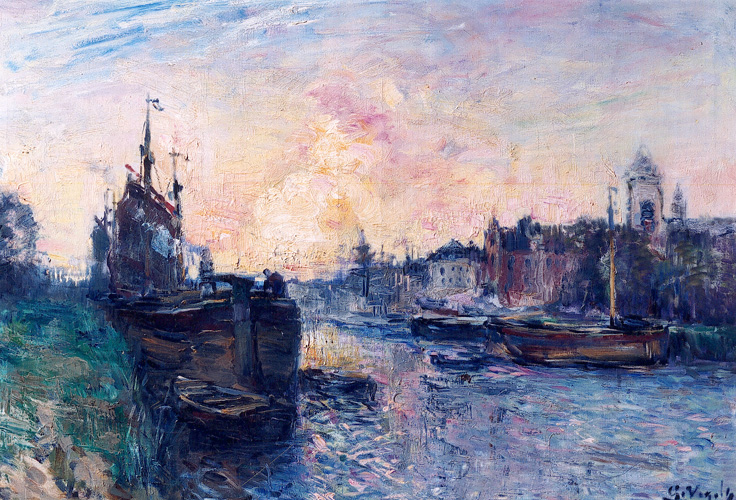
Guillaume Vogels, born on October 4, 1836, in Brussels, Belgium, emerged as a trailblazer in the realm of Belgian Impressionism. His artistic journey unfolded against the backdrop of a changing artistic landscape in the late 19th and early 20th centuries, marked by a departure from traditional academic styles toward more innovative and expressive approaches to painting.
Vogels’ early years were characterized by a deep connection to the cultural and artistic milieu of Belgium. Raised in a family with a passion for the arts, he embarked on his artistic education at the Royal Academy of Fine Arts in Brussels. The academy, a bastion of academic training, provided Vogels with a solid foundation in classical techniques, yet his innate curiosity and adventurous spirit led him toward a more experimental path.
Influenced by the Realist movement and the burgeoning interest in plein air painting, Vogels sought to break free from the constraints of academic conventions. His exposure to the works of Realist painters like Gustave Courbet and Édouard Manet ignited a spark of rebellion against traditional artistic norms, inspiring him to explore new realms of artistic expression.
Embrace of Impressionism
Vogels’ artistic evolution gained momentum as he embraced the tenets of Impressionism, a movement that was revolutionizing the European art scene. Impressionism, with its emphasis on capturing the transient effects of light and color, resonated deeply with Vogels’ sensibilities. The artist found liberation in the spontaneity of brushstrokes and the ability to convey the atmospheric nuances of his subjects.
The influence of the French Impressionists, including Claude Monet and Camille Pissarro, played a crucial role in shaping Vogels’ approach to painting. The allure of capturing the fleeting beauty of everyday scenes, bathed in the play of light and shadow, became a central theme in Vogels’ work. His shift toward a more luminous and vibrant palette marked a departure from the somber tones of academic realism.
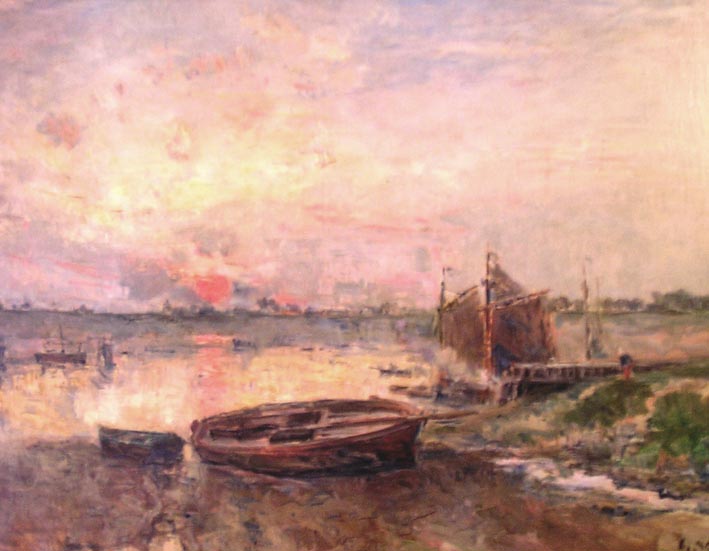
Vogels’ artistic pursuits often found inspiration in the diverse landscapes and urban environments of Belgium. The picturesque countryside, with its rolling hills and rustic charm, became a recurrent motif in his paintings. Vogels reveled in the challenge of capturing the ever-changing moods of nature, infusing his landscapes with a sense of immediacy and emotional resonance.
Equally enamored with the vibrancy of urban life, Vogels turned his attention to depicting scenes from the bustling streets of Brussels. Marketplaces, cafes, and everyday activities became fodder for his brush, as he sought to convey the dynamic energy and human interactions that defined the cityscape. Vogels’ ability to evoke the essence of both rural tranquility and urban vivacity showcased the breadth of his artistic vision.
Beyond his role as an artistic innovator, Vogels was deeply engaged with the societal and cultural currents of his time. The late 19th century witnessed significant social and industrial transformations, and Vogels, attuned to the zeitgeist, used his art as a means of social commentary. He embraced Symbolism—a movement that sought to imbue art with deeper meaning and symbolism—infusing his work with allegorical elements.
Vogels’ symbolic paintings often delved into themes of love, mortality, and the human condition. His exploration of Symbolism added a layer of complexity to his oeuvre, demonstrating his ability to navigate between the realms of impressionistic spontaneity and the deliberate symbolism of profound themes. Vogels’ commitment to infusing his art with a deeper significance reflected his belief in the power of visual expression to transcend the surface and resonate with the human soul.
Artistic Recognition
As Vogels’ distinctive style gained recognition, he became an influential figure in the Belgian art scene. In 1867, he co-founded the avant-garde group “L’Essor,” which aimed to promote modern and innovative art in Belgium. Vogels’ leadership within this artistic circle contributed to the dissemination of Impressionist ideals and the fostering of creative dialogue among Belgian artists.
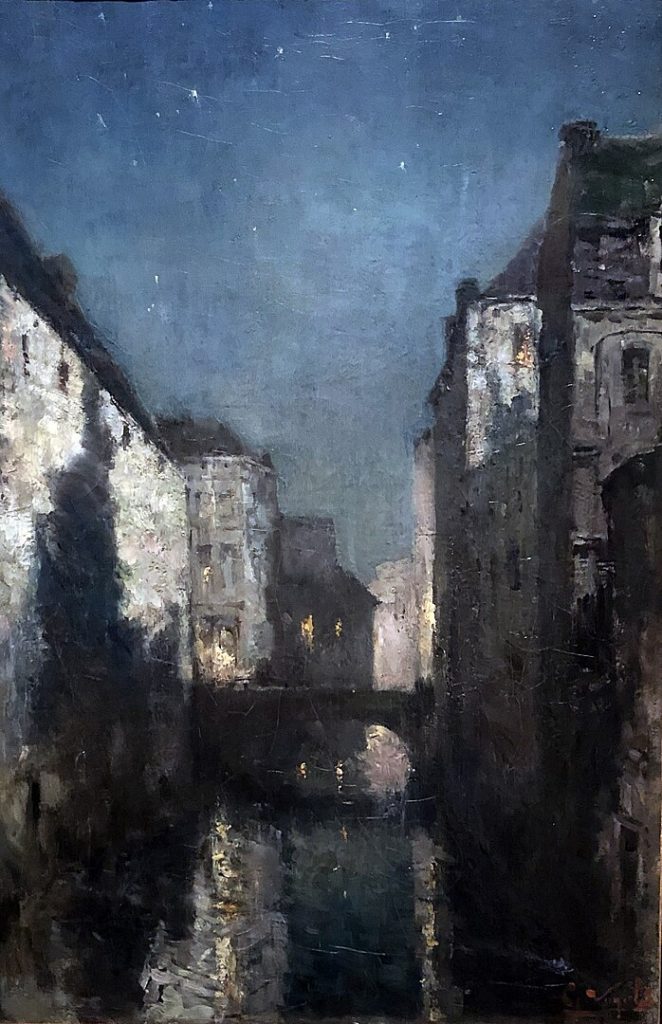
The artist’s participation in international exhibitions further solidified his reputation. Vogels’ works were showcased in major exhibitions, earning critical acclaim for their freshness, originality, and emotive quality. His influence extended to subsequent generations of Belgian artists, shaping the trajectory of Belgian Impressionism and leaving an indelible mark on the country’s artistic heritage.
In the later years of his career, Vogels continued to evolve as an artist while remaining true to the core principles that defined his earlier work. His paintings from this period revealed a mature mastery of technique, with a nuanced exploration of color and light. Vogels’ continued engagement with both rural and urban subjects showcased his enduring passion for capturing the diverse facets of Belgian life.
The onset of the 20th century brought further recognition to Vogels’ contributions. In 1913, he was appointed as a professor at the Royal Academy of Fine Arts in Brussels, where he shared his insights and experiences with the next generation of artists. Vogels’ role as an educator underscored his commitment to passing on the torch of artistic innovation and ensuring the continuity of the Impressionist spirit in Belgian art.
Guillaume Vogels’ legacy endures as a pivotal figure in the narrative of Belgian Impressionism. His ability to seamlessly fuse the spontaneity of Impressionist brushwork with symbolic depth contributed to the richness of his artistic legacy. Vogels’ impact extended beyond the canvas to the broader cultural and educational spheres, where his influence on the Belgian art community resonates to this day.
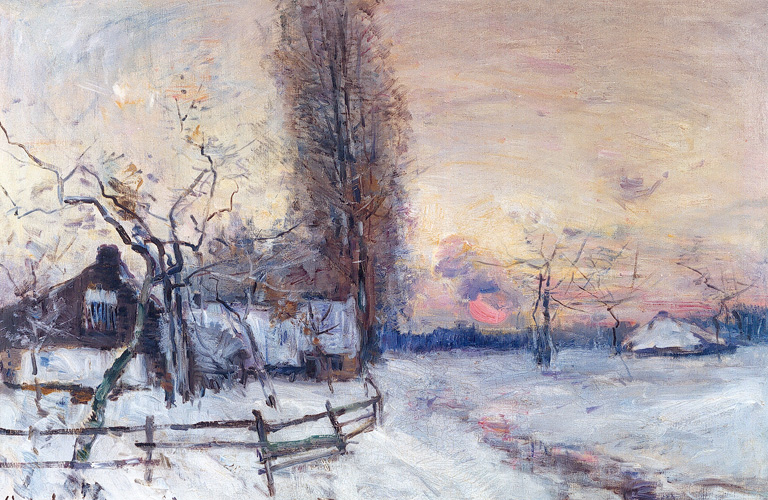
The artist’s exploration of the interplay between light, color, and emotion left an indelible mark on the trajectory of Belgian art. Vogels’ dedication to pushing artistic boundaries and challenging traditional norms exemplifies his enduring commitment to the transformative power of art. As Belgian Impressionism continues to be celebrated for its unique synthesis of innovation and tradition, Guillaume Vogels remains a luminary whose work continues to captivate audiences and inspire subsequent generations of artists.


